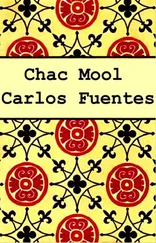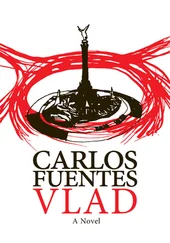Carlos Fuentes - Myself with Others - Selected Essays
Здесь есть возможность читать онлайн «Carlos Fuentes - Myself with Others - Selected Essays» весь текст электронной книги совершенно бесплатно (целиком полную версию без сокращений). В некоторых случаях можно слушать аудио, скачать через торрент в формате fb2 и присутствует краткое содержание. Год выпуска: 1988, Издательство: Farrar, Straus and Giroux, Жанр: Публицистика, Критика, на английском языке. Описание произведения, (предисловие) а так же отзывы посетителей доступны на портале библиотеки ЛибКат.
- Название:Myself with Others: Selected Essays
- Автор:
- Издательство:Farrar, Straus and Giroux
- Жанр:
- Год:1988
- ISBN:нет данных
- Рейтинг книги:5 / 5. Голосов: 1
-
Избранное:Добавить в избранное
- Отзывы:
-
Ваша оценка:
- 100
- 1
- 2
- 3
- 4
- 5
Myself with Others: Selected Essays: краткое содержание, описание и аннотация
Предлагаем к чтению аннотацию, описание, краткое содержание или предисловие (зависит от того, что написал сам автор книги «Myself with Others: Selected Essays»). Если вы не нашли необходимую информацию о книге — напишите в комментариях, мы постараемся отыскать её.
, Fuentes has assembled essays reflecting three of the great elements of his work: autobiography, love of literature, and politics. They include his reflections on his beginning as a writer, his celebrated Harvard University commencement address, and his trenchant examinations of Cervantes, Gabriel Garcia Marquez, and Borges.
Myself with Others: Selected Essays — читать онлайн бесплатно полную книгу (весь текст) целиком
Ниже представлен текст книги, разбитый по страницам. Система сохранения места последней прочитанной страницы, позволяет с удобством читать онлайн бесплатно книгу «Myself with Others: Selected Essays», без необходимости каждый раз заново искать на чём Вы остановились. Поставьте закладку, и сможете в любой момент перейти на страницу, на которой закончили чтение.
Интервал:
Закладка:
There is no difference between daily life and the literary work: both are the object of constant deformation. Gogol leaves the stage shared with the Pogodins and displaces himself anew, flees Russia, the popular success of Dead Souls, and the stupid critical reaction the novel receives: “A superficial work, a potboiler, a caricature of real Russian life,” writes Bulgarin in The Northern Bee. “A gross cartoon … Unbelievable characters, exaggerated, repulsive rotters, imbeciles” opposed to the patriotic conception of literature, says Polevoi in The Russian Messenger. “A vulgar story. Gogol is a poor writer who thinks that Chichikov exists in real life … Bad grammar, solecisms, pleonasms,” exclaims Senkovksy in Library for Reading. And all together now: Gogol is worse than Paul de Kock.
Belinsky, the great Belinsky, takes up the burden of the defense. But Gogol goes off to take the waters in Germany, and from Gastein he demands, as if his health depended on it, to know the adverse criticism he is fleeing from. “My sins, show me my sins, my soul thirsts to know them,” he writes in 1842.
He has given his body to no one. So the doctors take it over. That same year, everyone can see a character by Gogol taking cold baths at the beach at Ostende in Belgium: a trembling, wet bird surrounded by Gogolian medics. Dr. Krikkenberg in Halle orders him to go live on a cold island to cure his nerves. Dr. Carus in Dresden orders him to take the waters at Carlsbad until he swells and cures his liver. Dr. Preissnitz in Gralfenburg orders him to immerse himself once again in cold waters.
From a wintry beach, Gogol writes in 1845: “I live as in a dream, at times draped in wet sheets, at times sunk in a tub, at times frictioned, at times sprinkled, at times running convulsively until I heat up. All I feel is cold water; I neither feel nor know anything else.”
“My God!” Balzac wrote from his deathbed. “Twenty thousand cups of coffee have killed me!” Oh, my demons, Gogol could have echoed him, I have been killed by twenty thousand immersions in freezing water: I prefer the heat of hell!
He returns to Russia in 1848, emaciated and bent, his body a perpetual question mark. The character now comes to bid farewell to the land without answers and to indecipherable time. He goes to parties, he gives them. Sometimes he appears disguised as a charming rogue, a mime, a seducer, a perfect host who prepares punch and reads aloud; other times, he is the miserable and uncouth landlord, the provincial sleaze who knows it all and yawns in his guests’ faces: he is Khlestakov, he is Sobakevich, he is Nozdryov, all at once.
In agony, he receives a certain Father Mathias, a priest with a red beard (again stepping out of a work by Gogol) who assails him on his deathbed: “The debility of your body is no excuse for avoiding the fast!” “Denounce Pushkin, he is a sinner and a pagan!” “Think about saving your soul, not about stringing phrases together on a piece of paper!”
He does not write. He does not eat. He does not sleep. He dreams: diabolical temptations. He prepares for death by wrapping himself in a cold sheet. The final physician, a Dr. Klimmentov, arrives and sprays his head with a mouthful of vodka. Cold water; hot water. Gogol, delirious, exclaims — his last words: “Forward! Charge, charge the windmill!”
The step toward death is the step toward the written page: Gogol the character in Gogol dies invoking Don Quixote and enters the living tomb of the book, the source of modern narrative: the Cervantean universe. What matter if his funerals are Gogolian unto death? Slavophiles and Occidentalists fight for the privilege of burying the tiny body crowned in laurels and seemingly made of wax. The earthly struggle resolves itself in final chaos: the mob invades the church, everyone wishes to kiss the writer’s dead hand, pluck a leaf from the wreath, ascertain if the cadaver laughs still; they overturn the bier; they flee.
Gogolian Gogol is dead. He leaves as inheritance only a golden watch that almost certainly belonged to Alexander Pushkin, and an overcoat with a velour collar that perhaps belonged to Akaky Akakyevich.
IV
Gogol’s complete works were in the process of being printed when the writer died in 1852. Censorship immediately suppressed them. Gogol, who in life wanted only to be a man of order, respectful of constituted authority, was feared, says Troyat, in death. Did he become a revolutionary when he died?
Rather, Gogol’s ghost, a character in Gogol, continued to refuse all forms of facile characterization: he was neither Andreev’s tragic Gogol nor the heroic Gogol of Stalin. He was only a writer whose life and death confuse and construe themselves (or reconstruct themselves, since life and work are also constantly annihilating each other in the act of creation/re-creation) in a pulverized encounter of minimal humors and spectral anti-matter: life and work, work and life.
Gogol’s life and work germinate from a microscopic reality which breeds thanks to an anomalous vision of things: deformed, eccentric, grotesque. Traditional criticism has lent minute attention to Gogol’s perverse inclination to give human faces and bodies the form of grotesque and banal objects. In Dead Souls, for example, there are characters whose faces are like elongated cucumbers, or like the gourds from which balalaikas are made. Plyushkin the landlord has eyes that spring like swift little mice from under his high, bushy eyebrows. And in “Nevsky Prospekt,” the ladies’ sleeves would allow them to rise suddenly in the air “if their escorts did not hold them back.” “To lift a lady in the air”—concludes the Gogolian sentence—“is as easy and enjoyable … as taking a glass of champagne to one’s lips.”
Gogol’s fiction is dominated by sudden change, says Fanger. But the point is not to evoke the several metamorphoses, descendants of Ovid and forerunners of Kafka, that illustrate many of Gogol’s tales: the transformations of women and witches in the Mirgorod tales; the transformation of a man into his own nose in the tale of that name. Rather, the point is to understand that the theme of transformation — of change — is deeply important; it is, in a way, the root of all things: the reality of reality, so to speak.
Gogol puts it beautifully in “Nevsky Prospekt.” The symbol of romantic purity, the painter Piskaryov, for whom the loss of purity is identical to the loss of intelligence, has followed a strikingly beautiful girl down the principal avenue in Petersburg, the Nevsky Prospekt. The girl, as you may recall, leads the painter to the castle of impurity. On entering the bordello, Piskaryov discovers that his sweetheart is a courtesan, as foolish as she is vulgar. He loses his ideal but he gains his dream. And yet, between both — ideal and dream — a sensation of intense restlessness permits the author to understand that “a demon had broken the whole world into pieces, immediately mixing them up without any order.”
Metamorphosis, which is one of Gogol’s great themes, means something that goes beyond sudden change, and this something is the reconstitution of our original unity, broken and tossed to the winds by diabolical forces: we do not know who we are; what we take to be real is a deceit; the task of men and women, especially of the artist, above all of the artist, is to struggle, with no hope of victory, but without losing heart, to discover the hidden reality, the reality one can reconstitute behind the appearance of dispersion. There is a true reality behind the screen of social position, bureaucratic function, the false identity that others give us, and, above all, behind a falsifying use of language.
I shall say of the art of Luis Buñuel that rupture is the price of experience. But it is also the condition of poetry, nurtured by the plurality of the senses. This acceptance of the diverse permits art to truly aspire to and perhaps to actually reconquer the unifying vision. The paradox of the poetic is that it feeds on this rupture while at the same time trying to heal it and build a new unity on the synthesis of lost originality and concrete experience.
Читать дальшеИнтервал:
Закладка:
Похожие книги на «Myself with Others: Selected Essays»
Представляем Вашему вниманию похожие книги на «Myself with Others: Selected Essays» списком для выбора. Мы отобрали схожую по названию и смыслу литературу в надежде предоставить читателям больше вариантов отыскать новые, интересные, ещё непрочитанные произведения.
Обсуждение, отзывы о книге «Myself with Others: Selected Essays» и просто собственные мнения читателей. Оставьте ваши комментарии, напишите, что Вы думаете о произведении, его смысле или главных героях. Укажите что конкретно понравилось, а что нет, и почему Вы так считаете.












